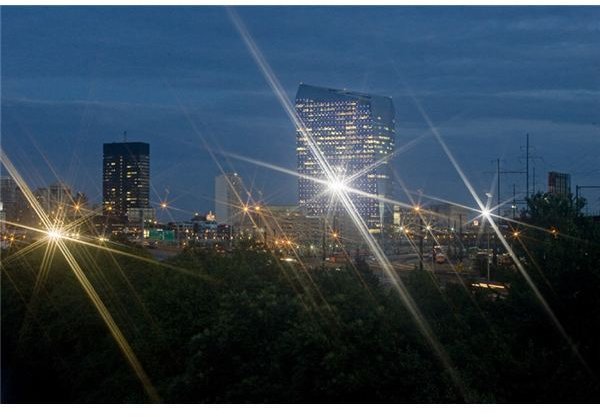The Best Techniques for Night Photography with a Digital Camera
Don’t be afraid of the dark
Nighttime photography presents special challenges for the photographer, but also offers special rewards. Photographs made at night provide a different look and feel than daytime shots, plus they show a level of skill beyond that of many amateur photographers. In this article, we’re going to look at several night photography techniques. I’ll discuss equipment, planning and shooting.
Painting with light
The first technique we’re going to consider is known as painting with light. In this technique you use your light source (usually a portable flash unit, but continuous light sources such as spotlights can also be used) to paint your subject with light. You can do this with a human being or use the technique to photograph a building at night.
A variation of this approach calls for covering the lens after each pop of the flash and then having your subject move a short distance. Uncover the lens, pop the flash again and repeat (the shutter must be open the whole time). This will result in ghost images. Calculate your exposure ahead of time and then underexpose by as many full f-stops as you want additional ghost images after your first flash pop.
For best results mount your camera on a tripod or steady surface and use a cable release to lock open the shutter.
Flash effects
Another nighttime photo trick is to combine flash and a colored gel while shooting with your digital camera’s white balance set to Tungsten lighting. Place a CTO orange gel on your flash and anything within range of the flash will come out looking normal (the gel corrects for the Tungsten setting) while everything beyond the range of the flash will have an electric blue cast to it. This method works particularly well with a cloudy night sky.
A tripod’s not necessary for this shot, but try to keep a slow enough shutter speed to let some of the ambient light register in the background.
Use special effects filters for star effects
Cross screen filters and star filters turn nighttime lights into star burst patterns producing much more interesting images. You can find these filters cheaply enough on eBay or at camera stores that sell used equipment, or you can simulate the effect of a cross screen filter by stretching a black nylon stocking across the front of your lens. Make sure your shot includes several light sources in order for the effect to take hold. This can be even nicer if you shoot after a rainfall as the reflections in puddles will add to the image.
They can also be combined with nighttime cityscapes for even more interesting images. For best results use a tripod and experiment with longer exposures (several seconds or more) in order to blur vehicle lights and add a ribbon of light effects to the image.
Follow these techniques for night photography with a digital camera and you’ll create excellent photos in no time.
